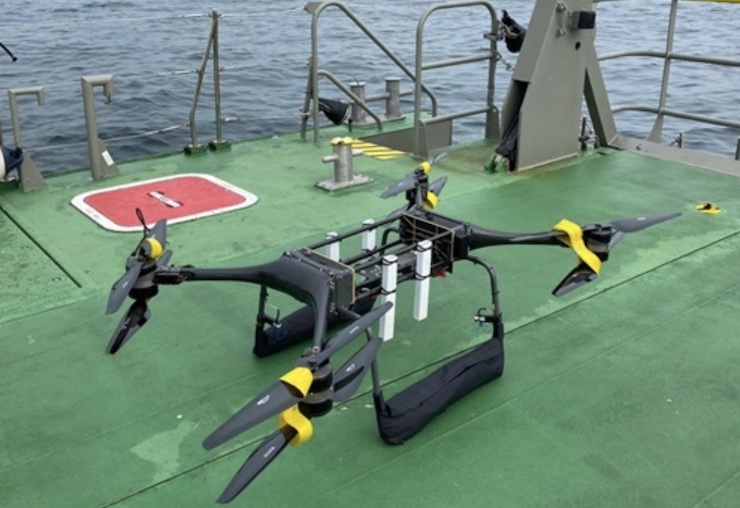
Ben Wallace, the United Kingdom’s Secretary of Defence said, “To assure our continued success on operations into the future it is vital that the Royal Navy continues to be equipped with the latest cutting-edge capabilities we need to address the rapidly evolving challenges that pose a threat to our national interests around the globe.” To keep with these rapidly evolving changes, the British Royal Navy established NavyX.
NavyX is a group of highly trained naval officers and technology experts. Their job is to develop and test new technologies that will shape ideas into actionable resources. Drones have become one of the biggest assets available to all military branches, making them a key study area for NavyX. On July 2, 2021, NavyX released that they had begun a new program using drones as rescue vehicles. If a crew member somehow falls overboard or is stranded in the water, the onboard officers need to plan a swift rescue mission without posing any further risk to human lives. This is where NavyX believes drones can be of use.
NavyX partnered up with two drone companies to facilitate at-sea rescues by an unmanned aerial vehicle. Providing the drone is Malloy Aeronautics based out of Berkshire, England. Malloy specializes in VTOL (Vertical Take Off and Landing) heavy lift drones. Malloy’s Minerva T-150 is a medium sized drone that can lift a 140lb payload in any weather condition. It fits compactly in a crate and is easy to rapidly deploy and operate through a laptop system. The drone can remain airborne for 36 minutes and has a range of 43 miles. Slightly smaller is Malloy’s Minerva T-80 which has all the same features as the T-150. The T-80 can lift a 66lb payload, covering a 30 mile range, with a 34 minute flight time. And as Malloy proudly states, “Our vehicles are built to military standards for commercial, private and military clients – this means our vehicles do exactly what we say, anytime, anywhere.”
To enable safe aerial logistics, NavyX turned to Planck Aerosystems, headquartered in San Diego, California. Founded in 2014 by a former US Navy helicopter pilot, Planck develops artificial intelligence, vision based systems that allow drones to be safely flown in all environments. Planck’s technology even means that a drone can be launched from and land on a moving vehicle. This capability is ideal for drones being used on a moving naval vessel, one that cannot stop to deploy a drone mission.
Using the Planck flight control system and Malloy drones, NavyX ran a series of man overboard rescue missions. The first round of drone rescue missions was held at the Royal Navy’s Diving School at Horsea Island, Portsmouth. The T-150 was able to autonomously locate a dummy in the water. The drone then released a test package for the dummy victim. In the future, this package would contain life saving equipment such as a raft. In an actual mission, the drone would hover over the raft and victim until a manned rescue team could arrive on the scene. After several tests with the T-150 at Horsea Island, NavyX chose a commercial fishing vessel to test the smaller T-80 drone for rescue missions.
This is not the first time the Royal Navy has tested drones as rescue devices. Over the last year, Royal Marines have held extensive drone tests in Norway and Cyprus. They have been testing drones to drop rescue supplies like a buoy and survival gear. The current drone tests being conducted by NavyX just goes to show how committed the Royal Navy is to utilizing the best technology available.
|